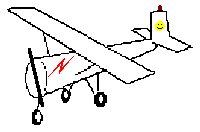
The ILS is a precision approach, providing both lateral and vertical guidance down a predetermined flight path. Missed approach procedures Instrument approach procedures VOR, VOR/DME LOC ILS GPS, GPS/LPV NDB approach techniques Often current conditions or personal minimums dictate higher approach minimums. MDAs, especially when circling, must be considered minimums only, not mandatory.The MDA must be maintained until either a landing is possible (ceiling, visibility, and environment in sight), the missed approach point is reached, or any other time that a missed approach is begun.Non-precision approaches have a minimum descent altitude, which is the absolute floor of the approach. Also referred to as DH (decision height), measured AGL from the touchdown zone (TDZE).At the DA, the decision is made to land or begin the missed approach segment.

Precision approaches use a decision altitude, measured in MSL.
All approaches have some kind of minimum altitude. Refer to visual maneuvering lesson plan Holding Minimum approach altitudes: MDA & DA Teaching outline Review of approach concepts Intercepting & tracking navigational aids Interacting with ATC in the approach environment Briefing the approach Flying a procedure turn Flying a DME arc Visual maneuvering: straight-in & circling The lesson will be complete when the student can describe the procedures required to fly a given type of instrument approach with minimal instructor guidance. Complete an oral quiz and demonstration of the concepts. Plot several different instrument approaches of the same type on the board, chair-flying their training aircraft through the procedure. Maintain active involvement by responding to questions and taking notes. Arrive with completed homework assignment. Conclude with an oral quiz, identifying and correcting errors. Have the student solve multiple scenarios. RNS is equipped with flight instruments, flight controls, radio navigation instruments and receivers, enabling the user to practice radio navigation techniques and procedures, by. Review each system before moving on to the nextĮvaluate student knowledge with questions emphasizing understanding rather than rote Radio Navigation Simulator, referred to subsequently as RNS, is a 2D flight simulator, operating in a synthetic flight environment of navigation beacons and airfields. #TIMS AIR NAVIGATION SIMULATOR SIMULATOR#
Illustrate techniques using Tim's simulator. As appropriate, discuss specific approach types and their characteristics. Briefly review and, if necessary, teach the combined elements of an instrument approach. 
Tim's Navigation Simulator works with multiple technologies.laptop with flight simulator and internet access.instrument procedure charts preferably in both Jeppesen & government formats.Instrument Flying Handbook and The Pilot's Manual: Instrument Flying.visual maneuvering: straight-in & circling.

The student should be able to apply previous lessons about approach components to an instrument approach chart, and be prepared to fly an approach in the aircraft.






 0 kommentar(er)
0 kommentar(er)
